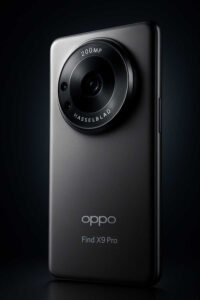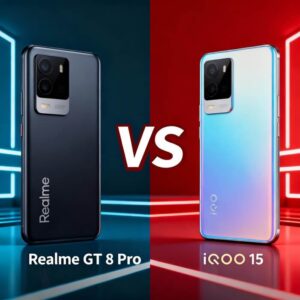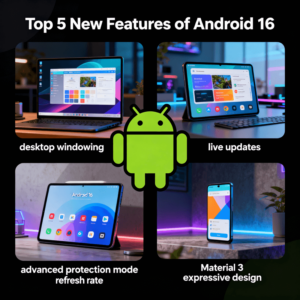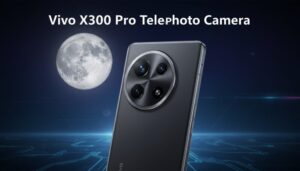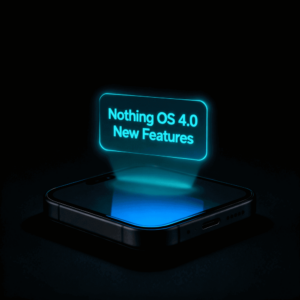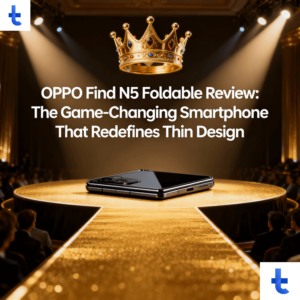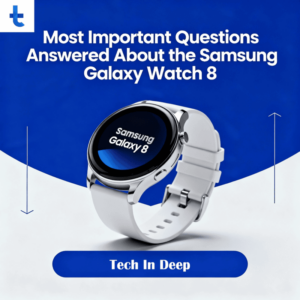Table of Contents
The Ultimate Foldable Phone Reviews 2025: Your Complete Buying Guide
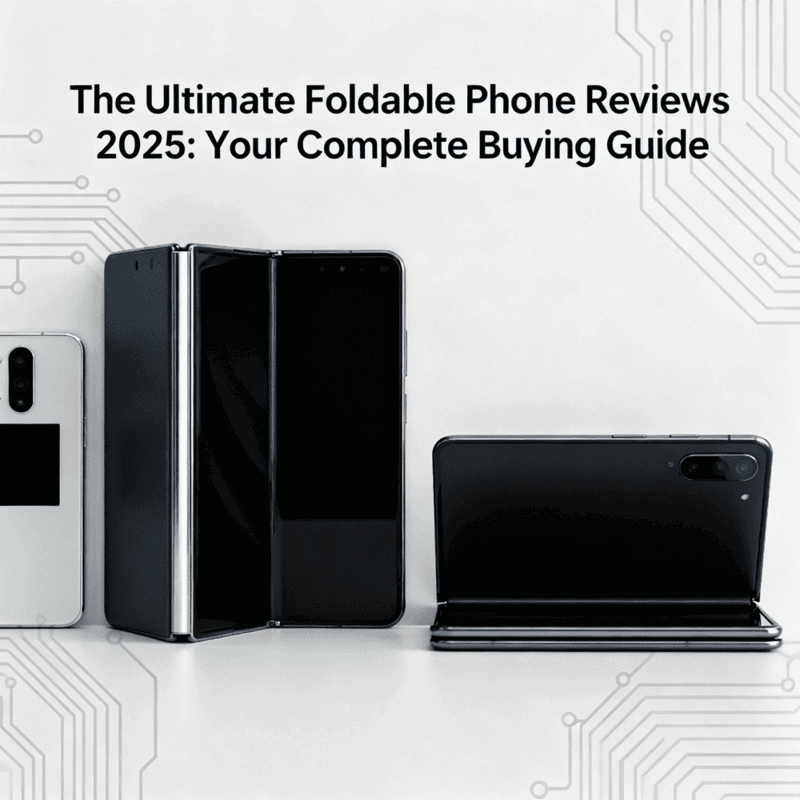
The foldable phone market has matured significantly in 2025, transforming from experimental novelties into compelling alternatives to traditional smartphones. With global shipments expected to reach 45.7 million units by 2028, according to IDC research, these innovative devices are gaining serious traction among consumers seeking versatility and cutting-edge technology. This comprehensive guide examines the best foldable phones of 2025, analyzes real-world everyday use experiences, and helps you determine whether investing in a foldable smartphone aligns with your needs and budget.
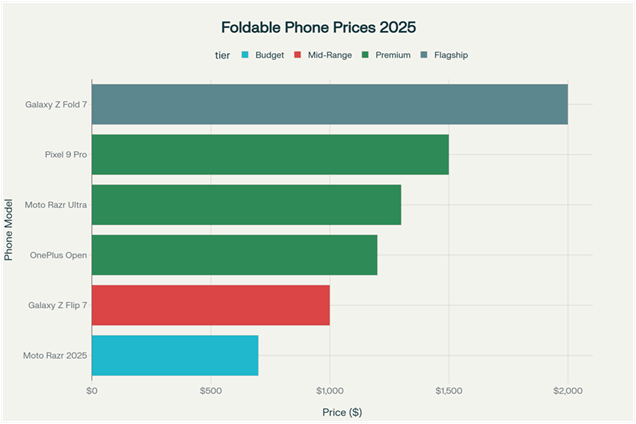
Understanding the Foldable Phone Landscape in 2025
The foldable smartphone market has experienced explosive growth, with the global market size valued at $27.79 billion in 2023 and projected to reach $74.02 billion by 2030, representing a compound annual growth rate (CAGR) of 13.5%. This remarkable expansion is driven by significant technological improvements in durability, performance, and user experience that address many of the early concerns surrounding foldable devices.

Modern foldable phones in 2025 come in two primary form factors: book-style foldables that open into tablet-sized displays, and flip-style devices that fold vertically for compact portability. Each design serves different use cases, from productivity-focused multitasking to space-saving convenience, offering consumers unprecedented flexibility in how they interact with their mobile devices.
Read Mode: OPPO Find N5 Foldable Review: The Game-Changing Smartphone That Redefines Thin Design
Top Foldable Phone Reviews for 2025
Samsung Galaxy Z Fold 7: The Premium Productivity Powerhouse
The Samsung Galaxy Z Fold 7 represents the pinnacle of foldable phone technology in 2025, earning recognition as the best camera foldable phone with its revolutionary 200MP main sensor that matches the Galaxy S25 Ultra. Priced at $1,999, this flagship device showcases Samsung’s commitment to refining the foldable form factor with its remarkably thin 8.9mm profile when closed and 4.2mm when unfolded.
The Z Fold 7’s 8-inch main display provides an exceptional tablet-like experience for productivity tasks, media consumption, and multitasking. Users consistently praise its ability to run multiple applications simultaneously, making it ideal for professionals who need to reference documents while taking notes or manage multiple communication channels. The device also features Samsung DeX support, enabling a desktop PC-like experience when connected to external monitors.
Battery performance remains a consideration, with real-world testing showing the device lasting approximately 16 hours of moderate use, dropping from 100% to 15-20% by day’s end. While not class-leading in battery life, the Z Fold 7 offers sufficient endurance for most users, though heavy multitaskers may need to manage their usage patterns carefully.
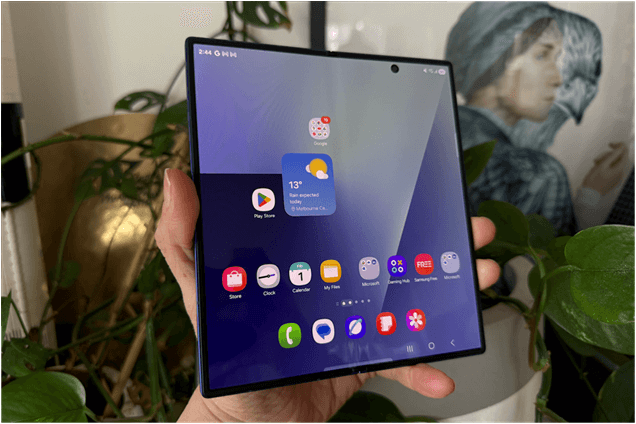
Samsung Galaxy Z Flip 7: The Compact Innovation Leader
Samsung’s Galaxy Z Flip 7 has reclaimed the top spot among flip-style foldables, featuring significant upgrades including a larger 4.1-inch Flex Window display that stretches edge-to-edge. This enhanced cover screen functionality allows users to perform most smartphone tasks without unfolding the device, addressing one of the primary limitations of previous generations.
The Z Flip 7 excels in photography scenarios, particularly for content creation. The larger cover display paired with the rear cameras creates an ideal setup for selfies and vlog recording, with the device automatically switching to flex mode when positioned at optimal angles. Battery life has improved over its predecessor, though flip phones generally face more battery constraints due to their compact form factor.
Priced between $999-$1,199 depending on storage configuration, the Z Flip 7 offers premium features at a more accessible price point than book-style foldables while maintaining the distinctive flip phone aesthetic that appeals to style-conscious consumers.
Google Pixel 9 Pro Fold: The AI-Enhanced Experience
Google’s Pixel 9 Pro Fold stands out as the best AI foldable phone, featuring the brightest display among foldables at 2,319 nits. This exceptional screen brightness ensures excellent visibility in various lighting conditions, while the device’s 8-inch main display provides ample space for productivity tasks and media consumption.
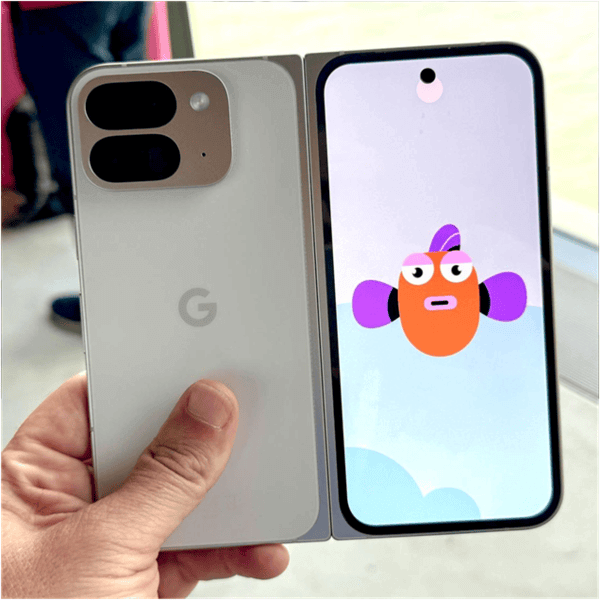
The Pixel 9 Pro Fold’s strength lies in its AI-powered features and camera capabilities. Google’s computational photography expertise translates well to the foldable format, with AI-enhanced photo editing tools that take advantage of the larger screen real estate. The device offers 11 hours and 36 minutes of battery life in testing, providing reliable all-day performance.
Priced at $1,499, the Pixel 9 Pro Fold offers competitive value in the premium foldable segment, though availability may be limited compared to Samsung’s offerings.
Read Mode: Samsung’s Galaxy Z Fold 3: What’s exciting about it
OnePlus Open: The Multitasking Champion
Despite being nearly two years old, the OnePlus Open continues to excel as the best foldable phone for multitasking, thanks to its innovative Open Canvas feature. This software implementation allows for intuitive three-app simultaneous usage, dynamically adapting the screen layout based on user needs.
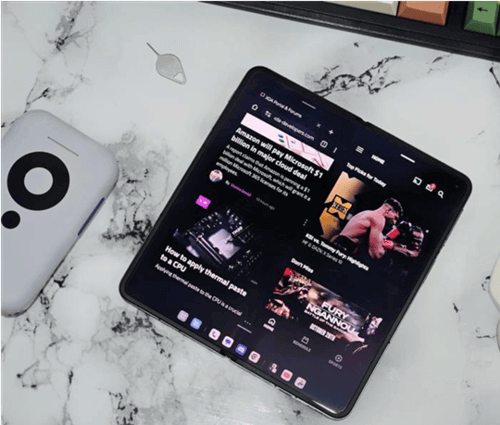
The OnePlus Open’s thin and light design, combined with exceptional build quality, makes it comfortable for extended use. The device offers impressive value at $1,199, though it lacks wireless charging and performs less optimally in low-light camera scenarios. The 4,805mAh battery combined with 67W fast charging provides excellent endurance and quick top-ups.
Motorola Razr Ultra 2025: The Battery Life Champion
Motorola’s Razr Ultra 2025 addresses one of the most common complaints about foldable phones with its impressive 4,700mAh battery, making it the longest-lasting foldable phone tested in 2025. The device features a titanium-reinforced hinge that improves durability by 35% while maintaining IP48 water and dust resistance.
The Razr Ultra 2025 incorporates flagship-level specifications including the Snapdragon 8 Elite processor, making it the most powerful flip phone available. However, this premium positioning comes with a higher price tag than previous Motorola models, though it remains competitive within the premium flip phone segment.
Motorola Razr 2025: The Budget-Friendly Gateway
The standard Motorola Razr 2025 proves that foldable phones can be accessible, maintaining its $699 price point while delivering meaningful upgrades. This device offers the same Moto AI features found in higher-end models, along with improved camera processing and a larger 4,500mAh battery that easily provides all-day usage.
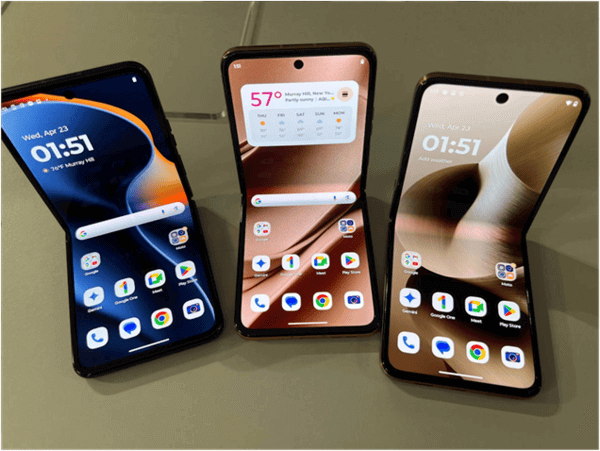
The Razr 2025’s 3.6-inch cover display allows full app functionality without opening the device, providing exceptional versatility for daily tasks. While the MediaTek Dimensity 7400X processor may not match flagship performance in benchmarks, real-world usage remains smooth and responsive for typical smartphone activities.
Foldable Phone Everyday Use Experience: Real-World Insights
Understanding how foldable phones perform in daily scenarios is crucial for potential buyers. Extended usage reports reveal both the benefits and limitations of living with a foldable device.
Read More: Huawei Mate X2 – The next level “Flamboyant” foldable phone is coming
Daily Usage Patterns and Practicality
Real-world usage data indicates that foldable phone owners unfold their devices less frequently than initially expected. Samsung Galaxy Z Fold users report opening their devices approximately 40-50 times daily on average, well below the 200,000+ fold cycle ratings that manufacturers guarantee. This usage pattern suggests the hinge durability concerns that plagued early foldables have been largely addressed.
Users consistently praise the versatility of having both compact phone and tablet functionality in a single device. The ability to switch seamlessly between form factors based on the task at hand provides genuine utility, whether checking quick notifications on the cover screen or diving into productivity work on the larger display.
Battery Life and Charging Realities
Battery performance varies significantly across different foldable models and usage patterns. The Samsung Galaxy Z Fold 7 typically provides 5-6 hours of screen-on time with mixed usage, while devices like the Vivo X Fold 3 Pro achieve up to 6 hours and 45 minutes in intensive testing scenarios.
Charging speeds have improved across the board, with some devices offering 80W wired charging that can reach 80% capacity in 30 minutes. However, wireless charging remains limited on many models, with Samsung’s 15W and other manufacturers omitting the feature entirely on some devices.
Durability and Long-Term Reliability
Modern foldable phones demonstrate significantly improved durability compared to first-generation devices. Advanced materials including Ultra-Thin Glass (UTG) 3.0 and reinforced polymer layers minimize visible creasing while enhancing scratch resistance. Hinge mechanisms now incorporate aerospace-grade materials and precision engineering that can withstand millions of fold cycles.
However, foldable screens remain more delicate than traditional glass displays due to their flexible construction materials. Users report the need for more careful handling, particularly when closing the device to prevent debris from entering the hinge mechanism.
Are Foldable Phones Worth It in 2025?
The Case for Foldable Phones
Enhanced Productivity and Multitasking: Book-style foldables excel at productivity tasks that benefit from larger screen real estate. Split-screen functionality, drag-and-drop capabilities between apps, and the ability to have multiple information sources visible simultaneously provide tangible workflow improvements.
Unique Content Creation Opportunities: Flip-style foldables offer distinctive advantages for photography and videography. The ability to use high-quality rear cameras for selfies while seeing the preview on the cover screen, combined with flex mode for hands-free recording, opens creative possibilities unavailable on traditional smartphones.
Conversation Starter and Premium Experience: Foldable phones continue to generate interest and admiration, serving as conversation pieces that reflect early adoption of cutting-edge technology. The tactile satisfaction of the folding mechanism and the premium materials used in construction provide a distinctive user experience.
Space Efficiency: Flip phones offer the unique benefit of providing full smartphone functionality in a more compact form factor when folded, appealing to users who prioritize pocket space or prefer smaller devices for casual use.
The Case Against Foldable Phones
Premium Pricing with Trade-offs: Even budget foldable options start around $699, while flagship models approach $2,000. For the same price, users can obtain traditional smartphones with superior camera systems, longer battery life, and proven durability.
Battery Life Limitations: The space constraints imposed by folding mechanisms and dual displays result in smaller batteries relative to device size. Most foldable phones struggle to match the all-day battery life of comparably-sized traditional smartphones.
Software Optimization Challenges: While improving, app optimization for foldable displays remains inconsistent. Some applications don’t take advantage of the larger screen space, while others may exhibit layout issues when transitioning between folded and unfolded states.
Durability Concerns: Despite improvements, foldable phones require more careful handling than traditional devices. The flexible display materials and complex hinge mechanisms introduce additional failure points that don’t exist in conventional smartphones.
Read More: Xiaomi Mi Mix Fold was leaked with all the details!
Making the Decision: Is a Foldable Phone Right for You?
Consider a Foldable Phone If You:
- Prioritize productivity and multitasking: Book-style foldables excel for users who regularly work with multiple applications, reference documents while writing, or consume media content that benefits from larger displays.
- Value content creation capabilities: Flip phones offer unique advantages for photography enthusiasts and content creators who want professional-quality selfies and hands-free recording options.
- Appreciate cutting-edge technology: Early adopters who enjoy having the latest innovations and don’t mind paying premium prices for distinctive experiences will find foldables compelling.
- Have specific form factor preferences: Users seeking either maximum screen space in a pocketable device (book-style) or minimal footprint when closed (flip-style) will benefit from foldable designs.
Stick with Traditional Smartphones If You:
- Prioritize battery life: Users who need reliable all-day battery performance without compromise should consider traditional flagship smartphones with larger batteries.
- Seek maximum camera quality: Photography enthusiasts focused on the absolute best image quality may find better value in traditional flagships that dedicate more space and budget to camera systems.
- Prefer proven durability: Users in demanding environments or those who prioritize long-term reliability may be better served by conventional smartphones.
- Work within budget constraints: Cost-conscious buyers can obtain more features and performance from traditional smartphones at equivalent price points.
Frequently Asked Questions: Foldable Phone Reviews 2025
Are foldable phones durable enough for daily use in 2025?
Yes, modern foldable phones have enhanced durability with robust hinges and tougher screen materials. Manufacturers have addressed many early issues, but the flexible inner screen still requires more care than traditional glass smartphones.
Is the crease on foldable phone screens still noticeable?
Most foldable phones do show a visible crease, especially at certain angles or with light reflections. However, the latest models have minimized its feel and appearance, so it usually does not interfere with routine use.
Are foldable phones worth it compared to regular smartphones?
A foldable phone can be a great investment if you value large screen multitasking, portability, and innovative features. For most users, the higher price is justified by these benefits, but those focused on cost or camera may find more value in conventional premium phones.
Do all foldable phones have a visible gap when folded?
Not all models do. Book-style foldables like the latest OnePlus Open and some Samsung models now close flat with little to no gap. Flip phones often fold completely or with only a minimal gap.
What should I consider before buying a foldable phone?
Important factors include durability, fold mechanism, screen quality and crease, camera performance, battery life, software support for multitasking, and your budget. Decide whether you prefer a larger book-style device for productivity or a compact flip model for portability.
Are there budget-friendly foldable phones in 2025?
Yes, options like the Motorola Razr 2025 offer an affordable entry into foldables. Prices start around $699, though most new releases remain in the premium segment.
How is the battery life of foldable phones in 2025?
Battery life in foldables has improved, but varies by device. Generally, expect all-day use from most current models, with high-end flip and fold devices matching traditional flagship phones for moderate use.
Do apps work well on foldable screens?
App compatibility has improved significantly. Most major apps adapt well to foldable screens, supporting features like multitasking and split view, though occasional quirks still exist for less optimized software.
What is the best use case for a foldable phone?
Foldable phones excel at tasks requiring both portability and a large display, such as multitasking, content creation, reading, and consuming media. Flip phones add convenience for compact everyday carry.
Can foldable phones replace tablets or laptops?
Foldables can act as tablet replacements for media and productivity, especially with desktop modes like Samsung DeX. However, most users will still prefer a full laptop for advanced work tasks.
Future Outlook and Recommendations
The foldable phone market continues evolving rapidly, with manufacturers addressing historical limitations through improved materials, software optimization, and refined designs. Market projections indicate sustained growth, with the segment expected to reach $127.8 billion by 2033.
For potential buyers in 2025, the decision largely depends on specific use cases and priorities. Users seeking productivity enhancements, unique content creation capabilities, or distinctive form factors will find compelling options across various price ranges. However, those prioritizing traditional smartphone strengths like battery life, camera quality, and proven durability may benefit from waiting for further technological maturation.
Budget-conscious buyers should consider the Motorola Razr 2025 at $699 as an excellent entry point into foldable technology. Premium users seeking the best overall experience should evaluate the Samsung Galaxy Z Fold 7 for productivity focus or the Google Pixel 9 Pro Fold for AI features and camera capabilities.
The foldable phone revolution is no longer a question of “if” but “when” these devices will achieve mainstream adoption. For early adopters and users with specific needs that align with foldable advantages, 2025 represents an excellent time to make the transition. For others, the rapidly improving technology and expanding options suggest that waiting another generation may yield even more compelling choices at better prices.
Foldable Phone Reviews 2025 Sources: Android Central, Meshable, Wired

